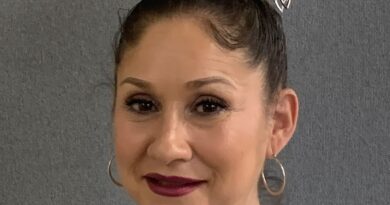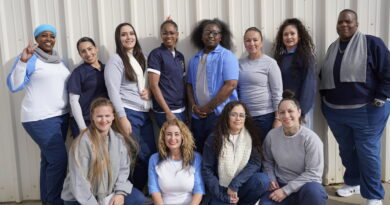The trouble with Suboxone
The drug epidemic continues in California prisons in the name of harm reduction


There are many opportunities to lessen substance abuse in prison.
One of them is Suboxone. This prescription drug is a combination of buprenorphine, an opioid substitute, and naloxone, an additive that prevents tampering with the pills. Suboxone is used to treat dependence on other opioids, like heroin. It can be used to stabilize someone in withdrawal during the medical detoxification process as well as for maintenance treatment, to promote recovery from opioid use disorder.
According to Inside CDCR, the California Department of Corrections and Rehabilitation newsletter, Suboxone was widely introduced during the pandemic to help incarcerated people detox from opioid addiction. This was a part of a harm reduction measure. Harm reduction is a practice to protect the lives of people who use drugs.
Suboxone is a part of the medication-assisted treatment (MAT) program here at CCWF. This program operates on a dual process: treatment of opioid dependence and enrollment in the Integrated Substance Use Disorder Treatment (ISUDT) program (formally called SAP). There is a system in place that screens and evaluates every incarcerated person for the ISUDT program. MAT is a voluntary part of that program. Once in the program, one must be under the care of a physician and can complete the MAT program.
“The MAT program helps you stay grounded in a group setting so people will be able to grasp onto tools that will help them be successful,” said Valentin Ferrel, the program director for Amity Foundation, the nonprofit organization that provides CCWF’s MAT programming.
Suboxone is a good tool when used properly.
Adiba Karimi’s story is a good example. Karimi had a seven-year heroin addiction prior to getting on Suboxone two years ago. “Some people use it for fun,” Karimi said, “but for real heroin addicts it helps with cravings.” Though addiction is a struggle, she is optimistic about eventual parole and tapering completely off, as required.
In the past few years, however, we have seen the once narrow path to Suboxone prescriptions widen.
I talked with an incarcerated person serving a Life Without Parole (LWOP) sentence who had been sober for 10+ years from a heroin addiction when they were recently ducated to Medical and offered Suboxone. This person, who would prefer to remain anonymous, told me they expressed a moment of relapsing thoughts at the offer, and ultimately sought out their support system to process the “weird” encounter. The only thing that seemed to have provoked this question was they had admitted 10 years prior to drug addiction. This person did not have any disciplinary actions involving substances nor had they requested help for substance use. It was baffling, to say the least.
Another incarcerated person shared how they were asked if they wanted Suboxone for pain. The incarcerated person expressed to me the fear they experienced being offered Suboxone by a professional who knew they were in recovery and had already
refused Suboxone when deciding to get clean years earlier.
At first, these incidents seemed to be rare. As time goes on, it seems more like a medical trend. Residents don’t need a clearly defined reason to be on Suboxone, just a want. It’s easy to notice that many residents have been on Suboxone for years.
People at CCWF should have more treatment options to choose from.
One resident I talked to suggested bringing back processing groups. Currently ISUDT runs didactic groups, in which participants acquire seat time hours coupled with comple-
tion of the program to graduate. They used to have three hours per group five days a week. Now it’s just two hours, three days a week. Their belief is that being able to process helps folks accomplish minute to minute, hour to hour, day to day sobriety that is sought daily.
Offender Mentor Certification Program (OMCP) and Certified Drug and Alcohol Counselors Maria Alaniz and Kim LaBore agreed that there should be a streamlined process for those who are serious about getting off drugs.
“There should be a yard for those who truly want to get off drugs,” Ala-
niz said. “This would be a specialized housing unit and would run more like a treatment center. That would be putting the California Model language of ‘normalization’ into action. Attending groups, going to programs, seeing a clinician, having access to mentors and sponsors, drop in meetings, incentive based activities, chores, etc.”
LaBore sees part of the issue as being able to have a place for anonymity to ask for help without consequence, shame or judgment. There has to be a goal in mind and we must celebrate every day of sobriety for those struggling to stay clean. The ultimate goal would be to taper off Suboxone and encourage self-will and internal strength.
There were three years to make a paradigm shift and change the culture when it came to drug addiction but that failed. Now here in 2024 another decision was made to provide every incarcerated person in the state of California with a Narcan nasal spray (used to reverse potentially fatal overdoses from opioids) in the name of harm reduction. The state also provides every person paroling with Narcan as a preventative maintenance measure.
“Narcan opens doors for people to take risks,” Alaniz said. “We’re in a place where there is active addiction. Folks are more apt to become a test dummy while their friend holds the can to ensure they will ultimately be okay.”
Recently a Certified Drug and Alcohol Counselor (OMCP Mentor) was under a cloud of suspicion for being in two different locations on two separate days where someone was overdosing. Instead of staff asking if the mentor was okay, they had to provide a urine analysis and their room was ‘ randomly’ searched minutes after the mentor stayed with the overdosing individual until medical assistance arrived.
There is a false narrative of being able to assist someone who is overdosing with administering Narcan.
CDCR policy tells us we are not supposed to be near anyone in a medical emergency. However, due to Narcan now being available to the population, there are questions regarding what CDCR’s official policy is and potential liability for incarcerated individuals who choose to intervene—or not—durig a possible overdose.
Harm reduction measures have proven to activate ripple effects within the community. For example, the traumatized mentor trying to help her peer who allegedly overdosed expressed to me how that incident greatly affected her.
While we encourage safe practices, we’re not looking at unintended consequences and their effects. Retriggering folks into relapse and re-traumatization. While we would like to think mental health services are readily available for those who need them, the reality of it is: it takes days to weeks to be seen here, in the largest women’s prison in the world.
The debate over what one sees as harm reduction continues. This is reminiscent of placing condoms in our restrooms. There is a concern that the next harm reduction implementation will be syringes. It is clear it is prohibited to have sex or use drugs in this environment, but it is going to happen, so let residents do it safely.



